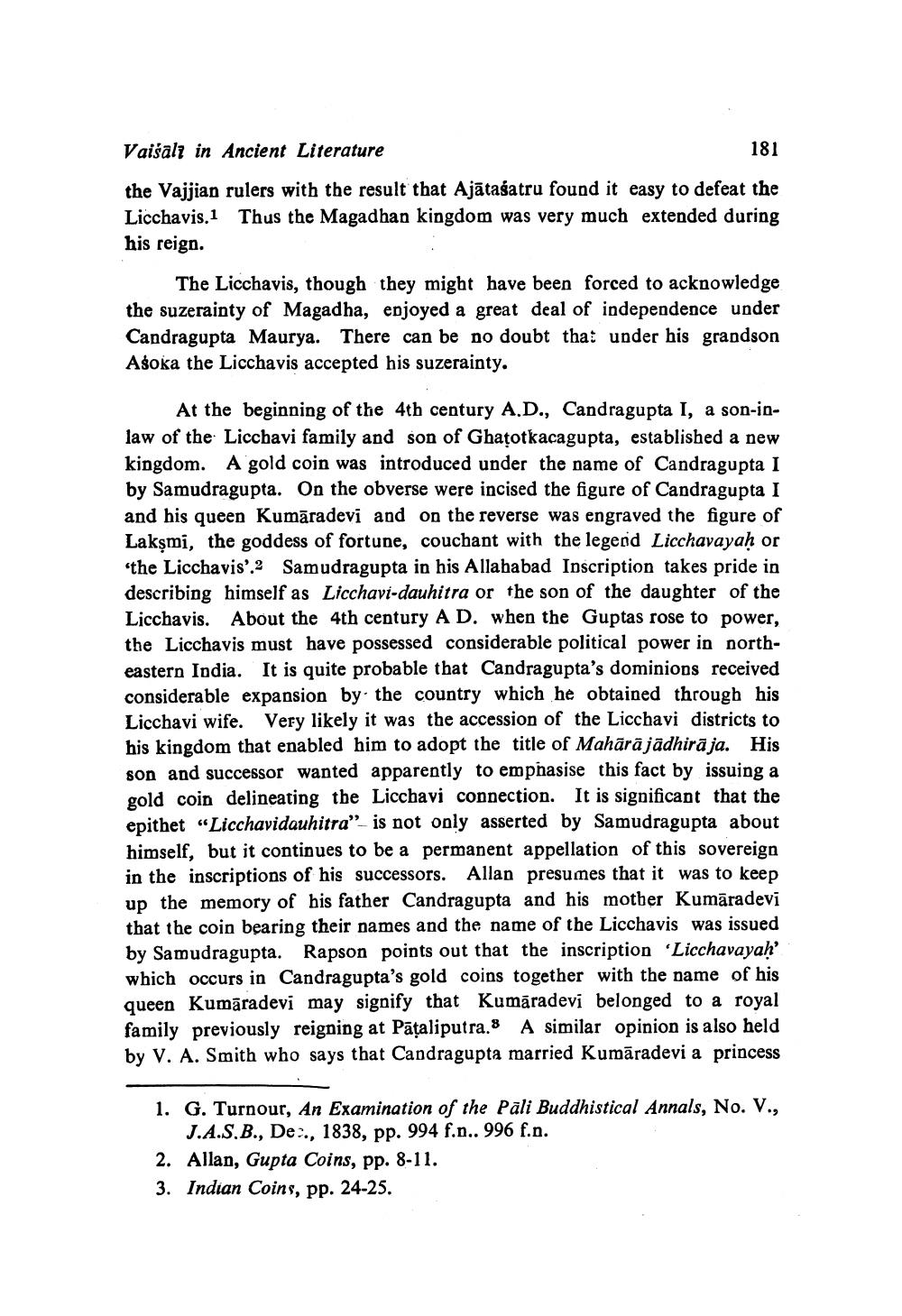________________ Vaisalz in Ancient Literature 181 the Vajjian rulers with the result that Ajatasatru found it easy to defeat the Licchavis.1 Thus the Magadhan kingdom was very much extended during his reign. The Licchavis, though they might have been forced to acknowledge the suzerainty of Magadha, enjoyed a great deal of independence under Candragupta Maurya. There can be no doubt that under his grandson Asoka the Licchavis accepted his suzerainty. At the beginning of the 4th century A.D., Candragupta I, a son-inlaw of the Licchavi family and son of Ghatotkacagupta, established a new kingdom. A gold coin was introduced under the name of Candragupta I by Samudragupta. On the obverse were incised the figure of Candragupta I and his queen Kumaradevi and on the reverse was engraved the figure of Laksmi, the goddess of fortune, couchant with the legend Licchavayah or "the Licchavis'.2 Samudragupta in his Allahabad Inscription takes pride in describing himself as Licchavi-dauhitra or the son of the daughter of the Licchavis. About the 4th century AD. when the Guptas rose to power, the Licchavis must have possessed considerable political power in northeastern India. It is quite probable that Candragupta's dominions received considerable expansion by the country which he obtained through his Licchavi wife. Very likely it was the accession of the Licchavi districts to his kingdom that enabled him to adopt the title of Maharajadhira ja. His son and successor wanted apparently to emphasise this fact by issuing a gold coin delineating the Liccbavi connection. It is significant that the epithet "Licchavidauhitra"- is not only asserted by Samudragupta about himself, but it continues to be a permanent appellation of this sovereign in the inscriptions of his successors. Allan presumes that it was to keep up the memory of his father Candragupta and his mother Kumaradevi that the coin bearing their names and the name of the Licchavis was issued by Samudragupta. Rapson points out that the inscription 'Licchavayah' which occurs in Candragupta's gold coins together with the name of his queen Kumaradevi may signify that Kumaradevi belonged to a royal family previously reigning at Pataliputra.8 A similar opinion is also held by V. A. Smith who says that Candragupta married Kumaradevi a princess 1. G. Turnour, An Examination of the Pali Buddhistical Annals, No. V., J.A.S.B., De.., 1838, pp. 994 f.n.. 996 f.n. 2. Allan, Gupta Coins, pp. 8-11. 3. Indian Coins, pp. 24-25.




